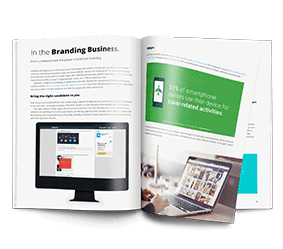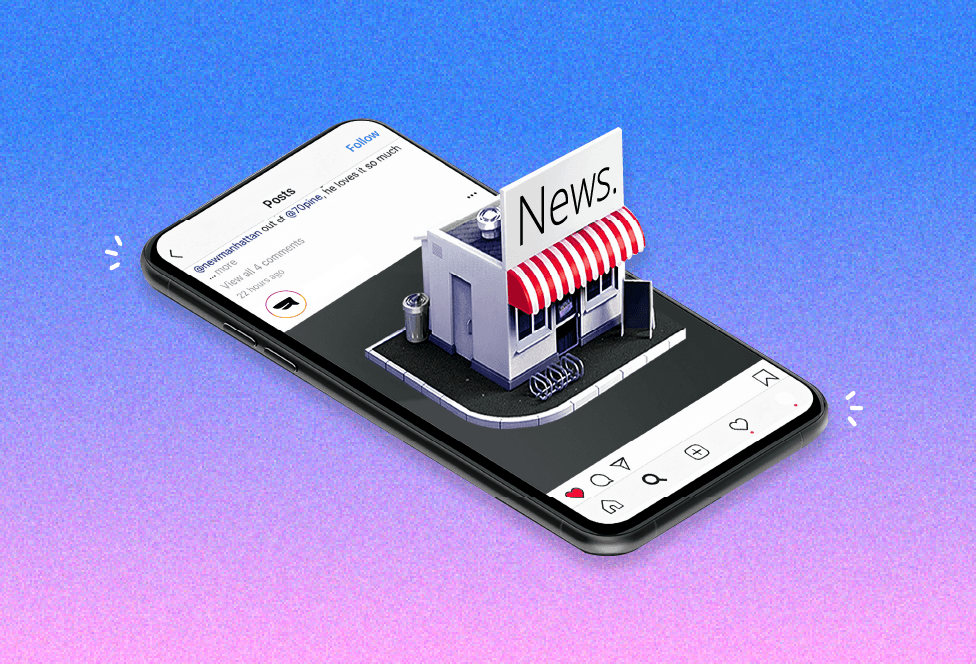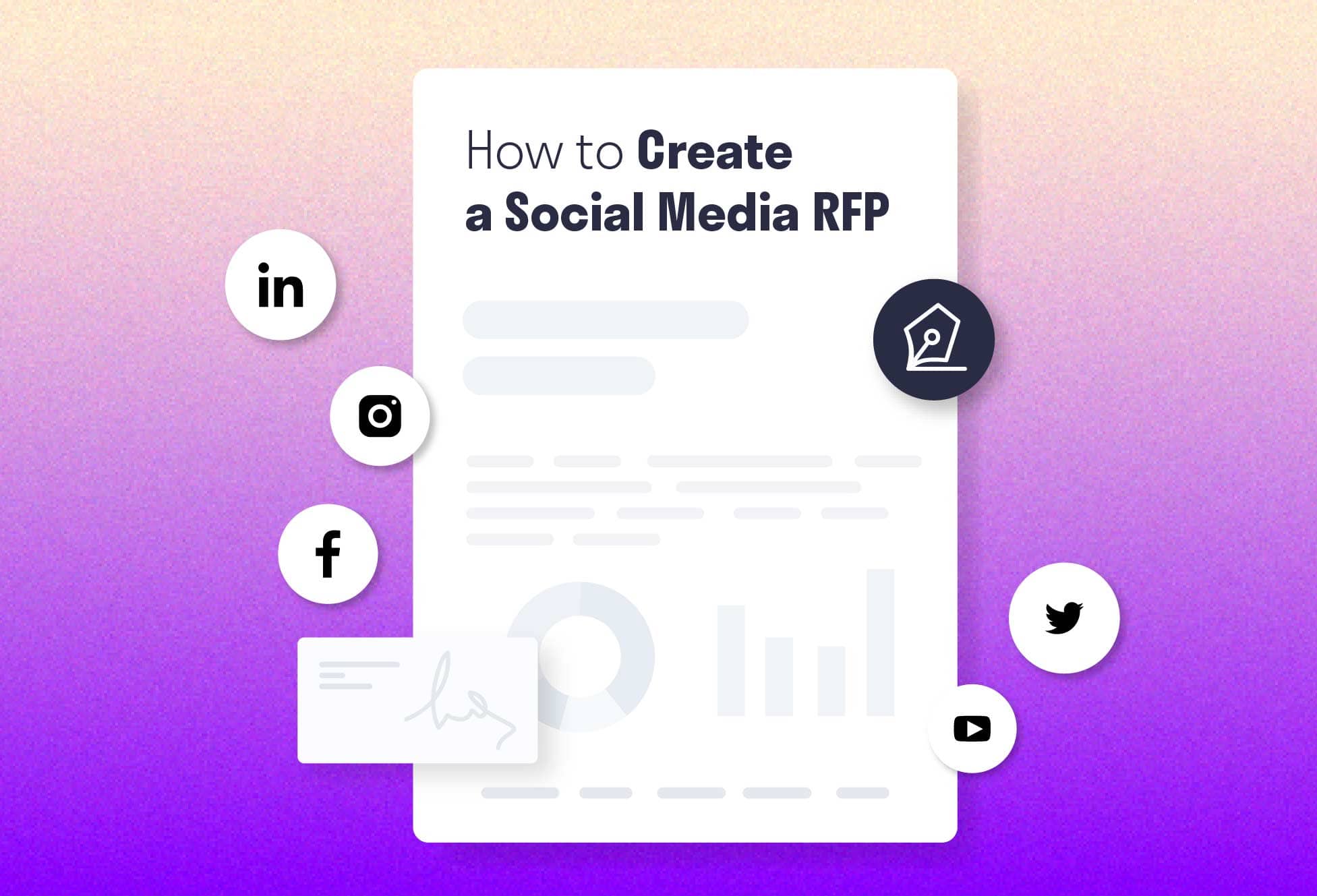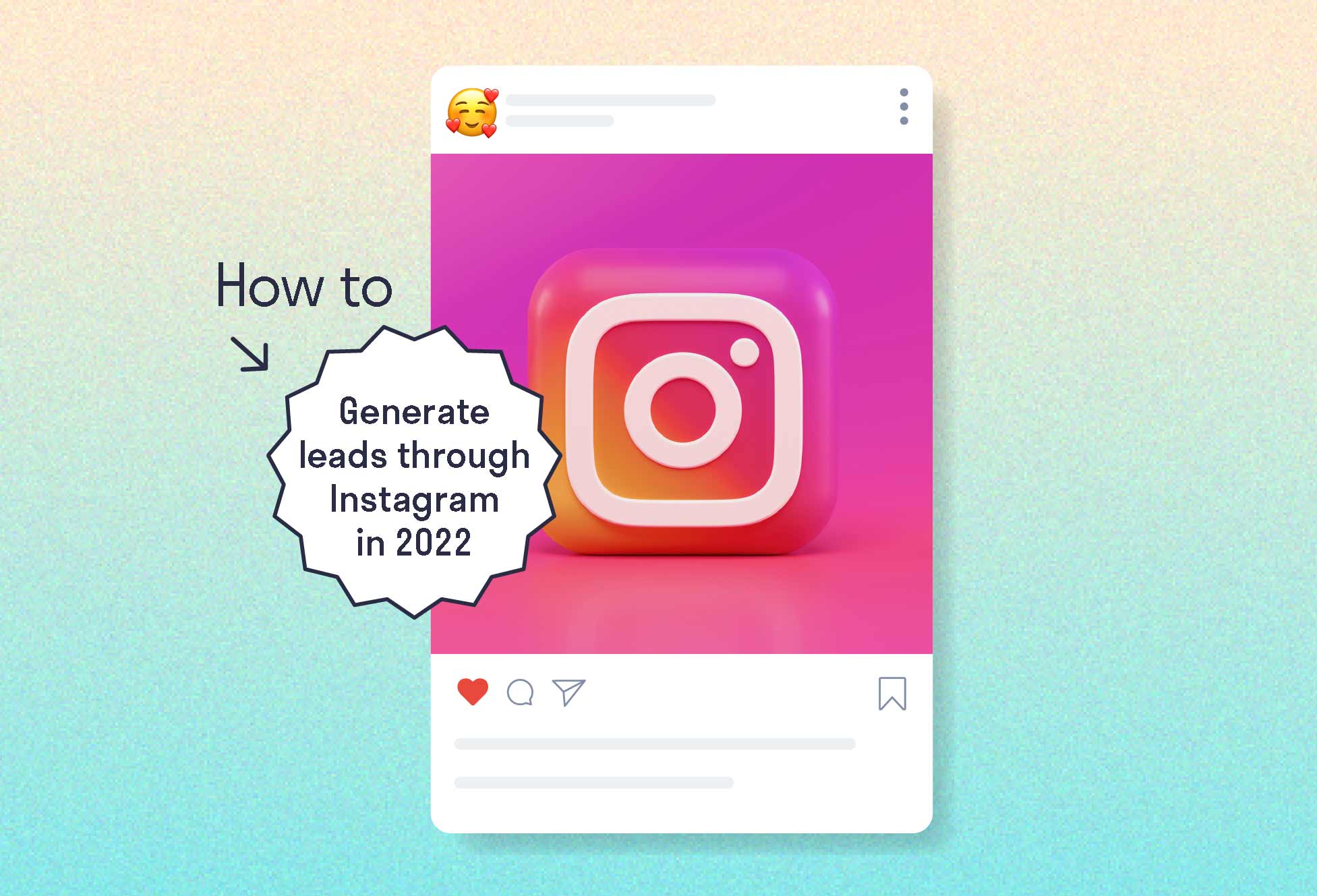Social media is an asset – and should be treated as such. Many companies use social for awareness and promotion, however your activities on social can also have a direct contribution to your bottom line, through lead gen campaigns. Historically a tactic used predominantly by B2B companies, lead gen on social media is in fact beneficial for all, as it can help you get a better grasp of the customer journey and better match your customers’ interests and needs to your offers.
Lead gen on social media can involve a wide range of content tactics. Here are some simple (but effective) approaches:
- The standard request demo/offer/get in contact option. This is a hard offer, and should be used wisely. Reserve your hard offers for people who have interacted with your content in the past – being too pushy can easily alienate fans.
- The handbook/guide/case study/webinar offer. A softer way to go about it, this type of lead gen involves a gated offer. The interested audience, both existing and new, have to sign-up with certain personal details, usually at the minimum email address and name, to get access to it. This is a great way to get new contacts into your database or enrich some of the older ones, as (if the offer is indeed a good one) users will feel that they get something valuable for their data, and will be more likely to share the info.
- Ungated content. This type of offer, the most common among marketers, is not full on a lead gen tactic, but a great foundation for nurturing a relationship. With smart cues and automation, a great article can be a nice motivator for someone to continue reading your blog posts and download your offers there.
Armed with this knowledge, you can start taking advantage of the options each network has available in terms of putting your offers out there. While these can be easily found by looking at each network’s help center, in this article we’ll go one step further.
Here are three tested tactics for using lead gen on social, that you can easily implement for your business.
1. Facebook. Test: Link post vs Image post
It’s been a well-known myth that by using Facebook link posts instead of an image post with a link in the text leads to higher reach and more potential conversions. Facebook claimed this in a 2014 blog post: “We will prioritize showing links in the link-format, and show fewer links shared in captions or status updates“.
After following this rule for the past few months, we decided to put it to the test. With our new guide, “15 Trends for Social and Digital Marketing in 2017” we created 2 separate versions, one to be used in a link post and the other one in an image post. We decided to go with two different visuals, as the link post comes with a predefined dimension.
The link post went out first, benefiting from the novelty of the offer.
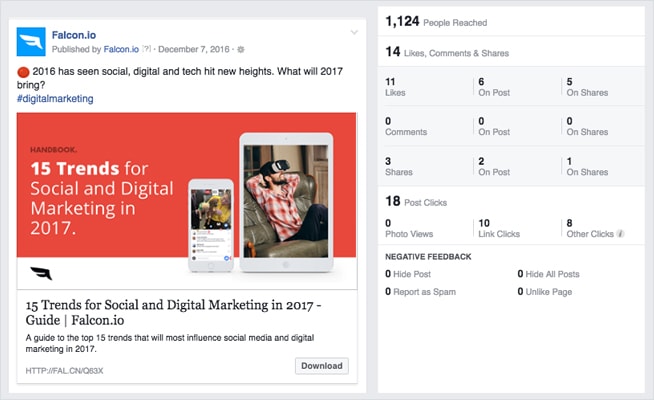
A month later the image post went out.
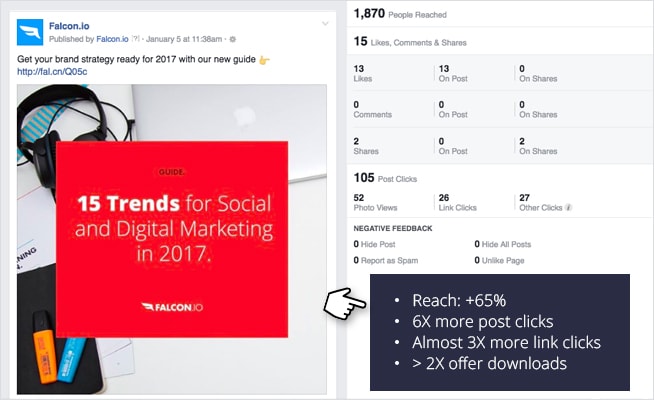
According to the rule, the link post should have performed better. However our test showed that the image post got a 65% higher reach, 6 times more post clicks and almost 3 times more link clicks, and more than double the amount of downloads, for the same period, one week. Why is that? While the copy was not inherently that different, a more striking image stood out in the newsfeed and got the attention of the viewers.
While each network comes with its recommended specifications, don’t let these restrict you. Experiment and see what works best for your brand. While our test is not a general rule, it showed us that there are more opportunities out there, that we can try the next time we want to promote an offer.
2. Youtube. Test: End screen CTAs, Youtube cards
Youtube is the second largest search engine. This alone should be a strong motivator for you to get a presence on the network. Our Youtube channel, though still in its infancy, has become a focus for our team, keeping it top of mind for all our activities.
While Youtube is a must for any brand that wants to leverage video, it is actually also a good source of leads if used properly. There are several options that make it easier for your viewers to extend their journey from just watching the one clip, amongst others:
- Video description: it is extremely important to leverage the description of your video so that it best represents your content and makes it easier for Youtube users to figure out what the video is about. The description also gives you the chance to add a CTA, inviting your audience to a new touchpoint.
- Youtube cards: Cards can be added on all videos and appear on the right hand side of the screen, when the viewer reaches a particular segment of the video. You can add a maximum of 5, with different options (link to a website, a playlist, a particular video or a channel), and encourage users to take action.
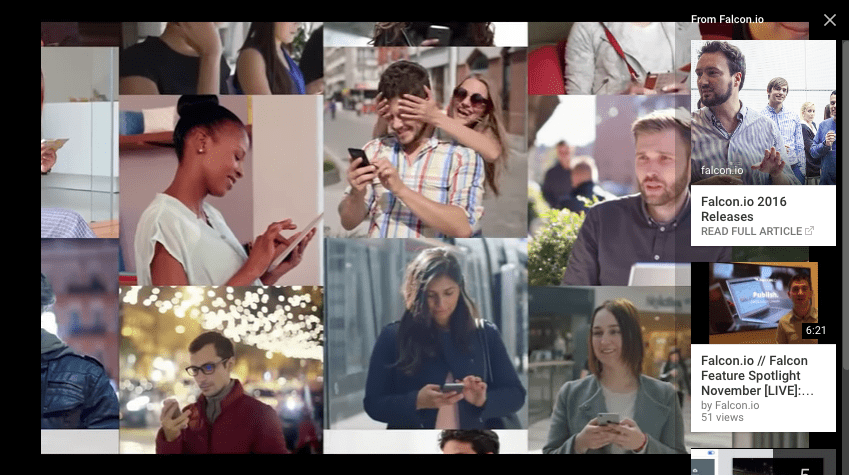
- End-screen: End-screen are a part of the video and appear in the last 5-20 seconds of the video. They are mobile friendly and can be personalized with the same purpose – to entice viewers to continue the interaction with your brand. You can feature a video or a playlist, a link, encourage viewers to subscribe or promote another channel.
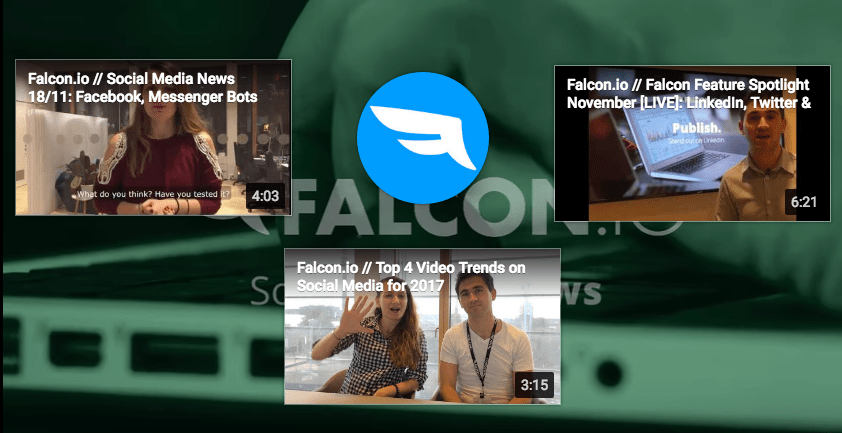
So why not put these options to a test? We’ve added CTAs in the description of all of our videos, cards and end-screens. Looking at our Youtube Analytics we can see that since the launch of the channel in May 2016 our YouTube cards have been clicked 16 times and our end-screen 3 times (full disclosure: as the feature has been introduced recently, it can only be found on 3 of our videos at the moment).
What about web analytics? In the period October 2016-December 2016, we’ve gathered a total of 40 sessions from our Youtube channels, convinced viewers to continue their journey with 4 more steps from the original Youtube videos, some of them going as far as signing up for more info on our platform (the hard offer mentioned before). It’s not a massive number, but every interaction matters.
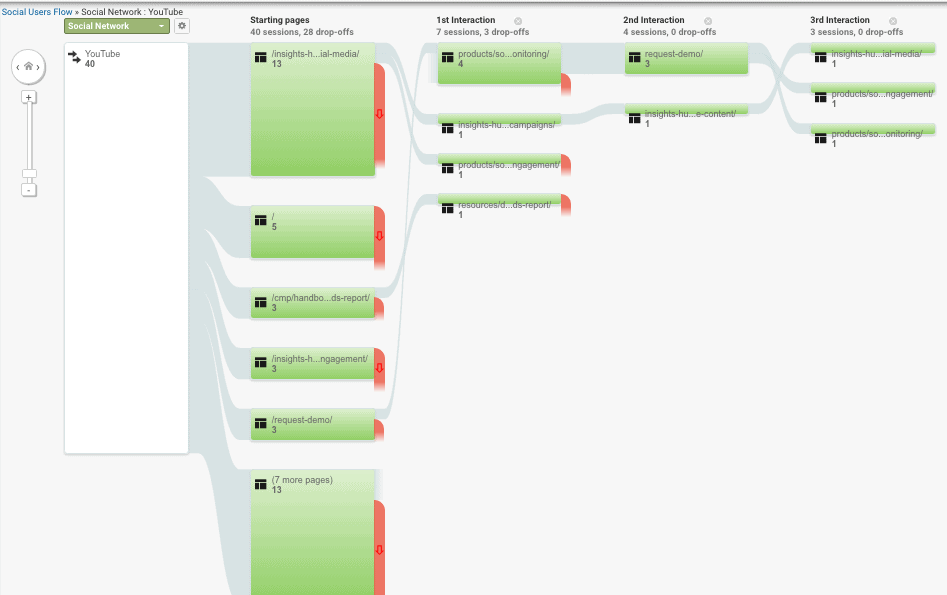
The viewer journey from Youtube to our website, as showcased in Google Analytics.
3. LinkedIn. Test: Link post vs Image post
Similarly to Facebook, LinkedIn posts can also be added as link posts or image posts. Link posts are mobile friendly, making it easier to click through to a website, and showcasing the accompanying visual . With more than 60% of traffic coming from mobile on LinkedIn, the natural choice for marketers would be to use link posts for their updates. But how does that work in reality?
Ever since Falcon introduced publishing and scheduling image photos to LinkedIn, we have taken advantage of the feature to publish more image posts. The results? In the Nov-Dec period, compared to Sept-Oct, we have managed to increase our traffic by 12% and the number of form fills by more than 50%. In other words, a good image post with a valuable offer attached can stop users while scrolling in their feeds and pique their curiosity.
3 tests: The takeaways
These have been some of our lead gen tests in the last few months. However, with social media continuously evolving and more and more companies battling it out for attention and data, lead gen will also require increasingly creative ways for implementation. All social networks have introduced great features to drive contact acquisition. It’s now up to marketers to create their own mix of methods – but it all starts with testing and learning from your results. Most importantly – testing again at certain time intervals, just to make sure you aren’t missing out on any golden opportunities.
